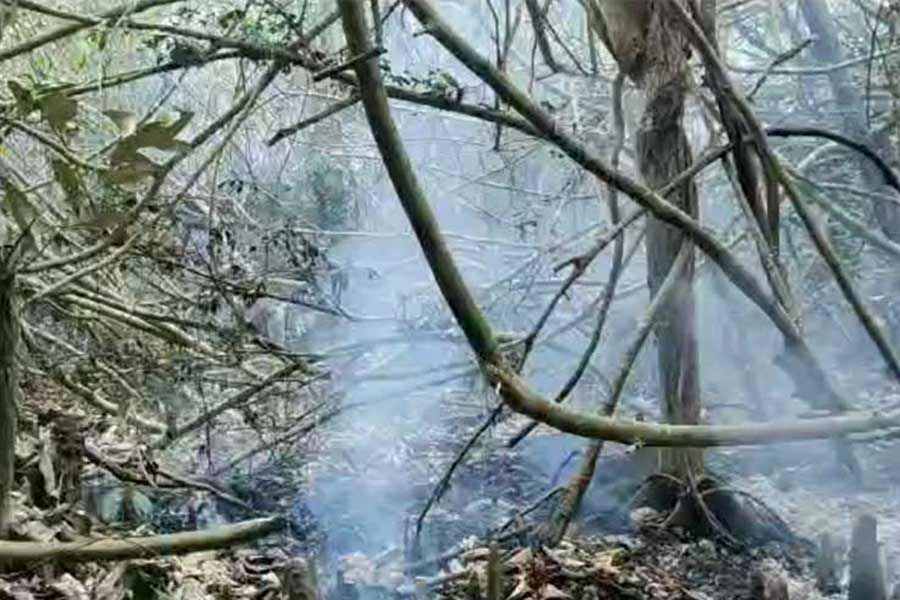
Published :
Updated :

The fire service department, forest guards, the Navy, Air Force, members of the Coast Guard and local volunteers who fought together to bring the latest fire in the Amurbania area of Chandpai range in the Eastern Zone of the Sundarbans under control undoubtedly did a commendable job. For, amid the prevailing intense heatwave, the fire could linger on for weeks wreaking untold havoc on the mangrove forest. The Sundarbans' Eastern Forest Division where the fire broke out last Saturday afternoon was visited by similar fires even in the past. Previously, another fire incident occurred in May, 2021 in the Daser Bharani area of Sharankhola Range in the Eastern Forest Division. Surprisingly, over the last two decades since 2002, the Eastern Forest Division experienced 25 fire incidents including last Saturday's one. What is the mystery behind it? Theories abound.
Going by probe reports of similar fires in the past, the latest forest fire in the Sundarbans could be caused by the burning butts of cigarette carelessly thrown away by mouals (honey collectors) or fishermen. It may also be that the mouals to drive away honeybees create smoke by setting fire to what they call karu, or mashal (torch)-a pile of dry and wet leaves-on the forest floor. The smouldering leaves or twigs of such mashal could be a source of the forest fire. But these are mere conjectures. However, the probe report of Saturday's fire is yet to come out to shed light on what actually caused it.
But some locals are of the view that the mouals or fishermen cannot be so insensitive that they would carelessly leave slowly burning leaves or cigarette ends on forest floor. That is because they treat forest, the source of their livelihood, with great reverence.
But these are all about the theories of accidental fire. But one cannot also dismiss the idea of an intentional fire out of hand. Some might like to clear a portion of the forest by burning small trees, plants and creepers so they could dry fish caught illegally from the rivers and other water bodies in the Sundarbans.
However, one expert in his interview with a local media house came up with an altogether different idea about the Sundarbans' Eastern zone being the site of frequent fires. He blamed unplanned dredging of rivers and dumping of the excavated earth from the rivers on either side of the forest instead of on the other side where there is human settlement. As a result, the earth piled up on the forest side has turned into a veritable embankment raising the level of the forest floor and thus depriving it of the flow of tidal water. In consequence, some parts of the forest area in the Chandpai and Sharankhola range of the East Sundarbans Division have dried up rendering them susceptible to fire. At the same time, the ecology and biodiversity of those areas have undergone changes over the last three decades since the earthen embankment was created. Apart from human action to change the physical features of certain areas of the Sundarbans, natural causes like climate change are also at play. Drying up of some rivers flowing through the Sundarbans is one such issue. So, the government in collaboration with its international partners who care about this mangrove forest should take up projects to protect the Sundarbans against this new kind of threat.
Sundarbans Reserve Forest (SRF), one of the largest mangrove forests of the world, has been under different kinds of threats both from humans and nature. But humans pose the worst threat as they illegally kill and steal its unique animals, cut down trees and commit other acts harmful to the mangrove forest's biodiversity and delicate ecosystem.
The government and all others concerned need to act in concert to protect the Sundarbans from the depredations of both human and natural enemies.


 For all latest news, follow The Financial Express Google News channel.
For all latest news, follow The Financial Express Google News channel.